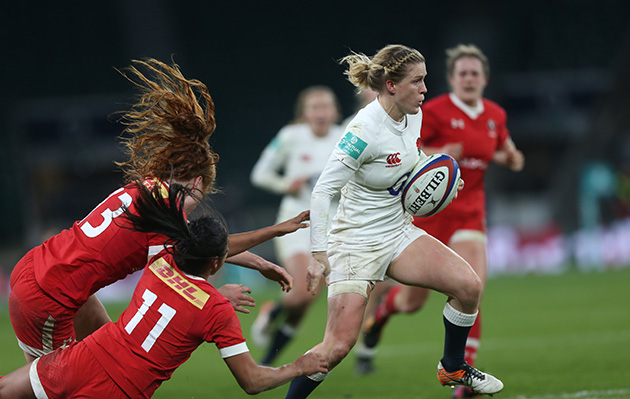The Wales full-back explains how to hit the target from the tee
Leigh Halfpenny: How to kick for goal
Only Neil Jenkins and Stephen Jones have scored more points for Wales than Leigh Halfpenny, whose goalkicking was also crucial to the British & Irish Lions’ series win in Australia in 2013. Here he offers his top tips on kicking for goal…
The tee
“When placing the ball, line up the seam of the ball with the target – the middle of the posts. My personal preference is to have the seam with the pump valve on the opposite side to the one facing me. I’m a right-footed kicker and I’ll be aiming to hit the sweet spot about a third of the way up the ball.”
The angle
“Once the ball is on the tee, I take four steps back and then five to the left, to leave myself with a 45-degree angle towards the ball. Then I’ll visualise the ball going between the posts – a successful outcome. I like to set a target of a third post in the middle of the two actual posts and I visualise the ball hitting that. If I hit that, I know it’s through!”
The run-up
“As I run up, I plant my left foot alongside the ball about a shoulder-width apart from it and look to hit the sweet spot with the instep of my right foot, then follow through. Don’t stop once you strike the ball, take your weight through it and finish past the tee.”
MORE SKILLS ADVICE…
Beauden Barrett: How to mix your kicks
All Blacks fly-half Beauden Barrett, the World Rugby…
Danielle Waterman: How to sidestep
England Women’s full-back Danielle Waterman gives her top…
Mike Haley: How to perfect your positioning at 15
Sale Sharks full-back Mike Haley gives his top…
The stance
“You want an upright stance when kicking the ball, not bent over. That gets me more power and distance – and more accuracy – when I’m striking the ball. I use trigger phrases – get alongside the ball, stay upright, make contact through the ball. Because I’m focused on executing those points, I forget about the crowd.”
This article originally appeared in the December 2018 edition of Rugby World magazine.
Every month Rugby World features advice from professional players and coaches on specific skills.
Follow Rugby World on Facebook, Instagram and Twitter.








